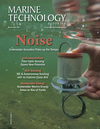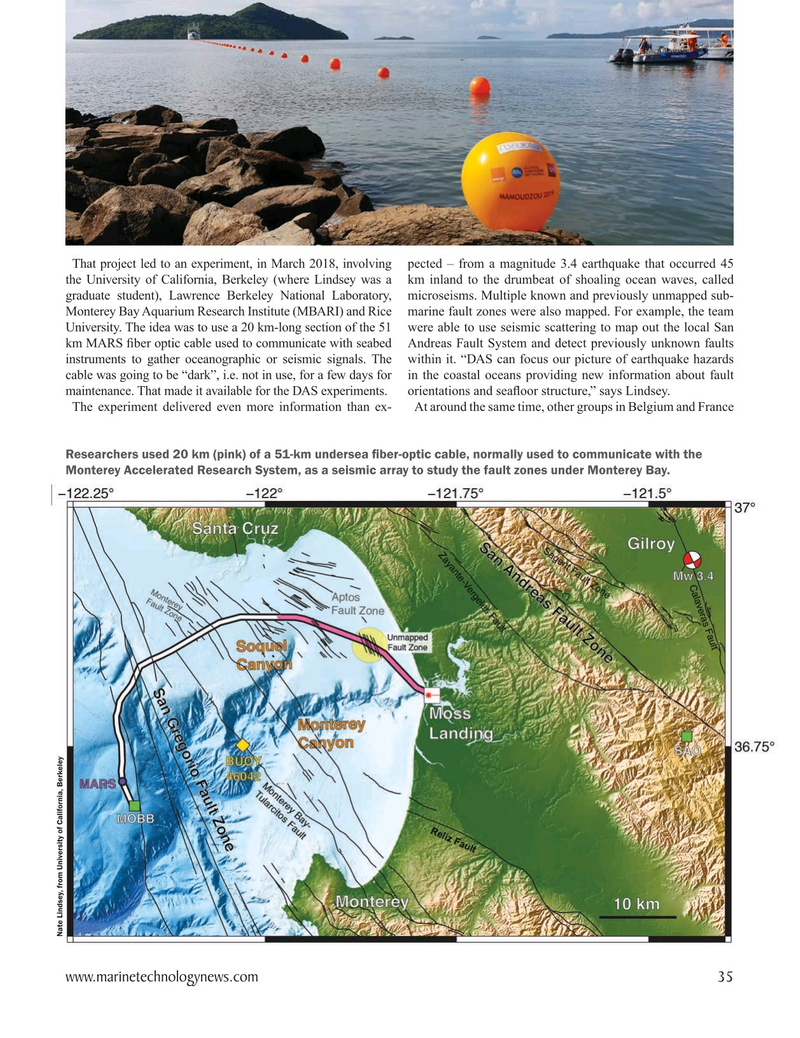
Page 35: of Marine Technology Magazine (March 2021)
Oceanographic Instrumentation & Sensors
Read this page in Pdf, Flash or Html5 edition of March 2021 Marine Technology Magazine
That project led to an experiment, in March 2018, involving pected – from a magnitude 3.4 earthquake that occurred 45 the University of California, Berkeley (where Lindsey was a km inland to the drumbeat of shoaling ocean waves, called graduate student), Lawrence Berkeley National Laboratory, microseisms. Multiple known and previously unmapped sub-
Monterey Bay Aquarium Research Institute (MBARI) and Rice marine fault zones were also mapped. For example, the team
University. The idea was to use a 20 km-long section of the 51 were able to use seismic scattering to map out the local San km MARS ? ber optic cable used to communicate with seabed Andreas Fault System and detect previously unknown faults instruments to gather oceanographic or seismic signals. The within it. “DAS can focus our picture of earthquake hazards cable was going to be “dark”, i.e. not in use, for a few days for in the coastal oceans providing new information about fault maintenance. That made it available for the DAS experiments. orientations and sea? oor structure,” says Lindsey.
The experiment delivered even more information than ex- At around the same time, other groups in Belgium and France
Researchers used 20 km (pink) of a 51-km undersea ? ber-optic cable, normally used to communicate with the
Monterey Accelerated Research System, as a seismic array to study the fault zones under Monterey Bay.
Nate Lindsey, from University of California, Berkeley www.marinetechnologynews.com 35
MTR #3 (34-49).indd 35 3/22/2021 9:13:22 PM

 34
34

 36
36
